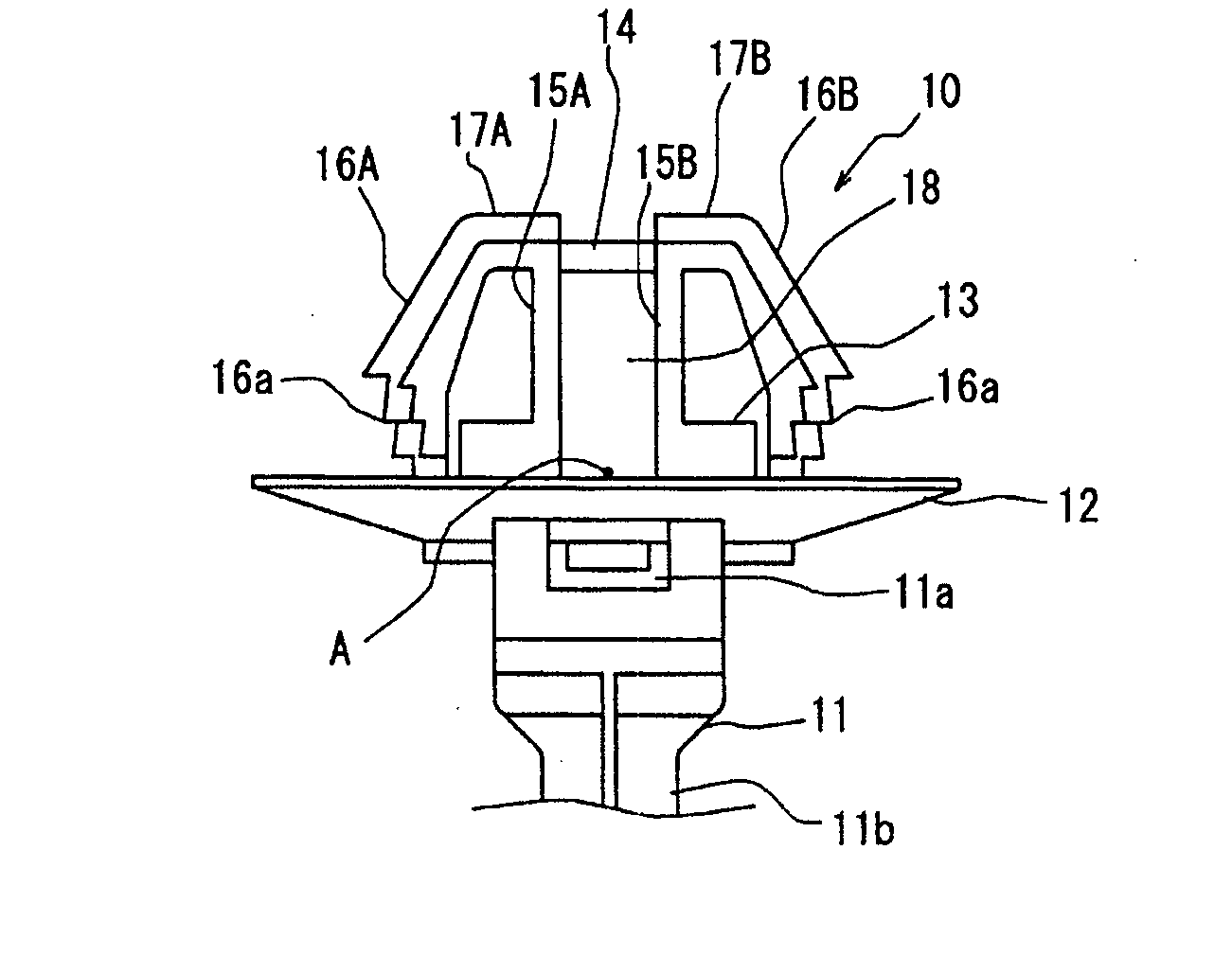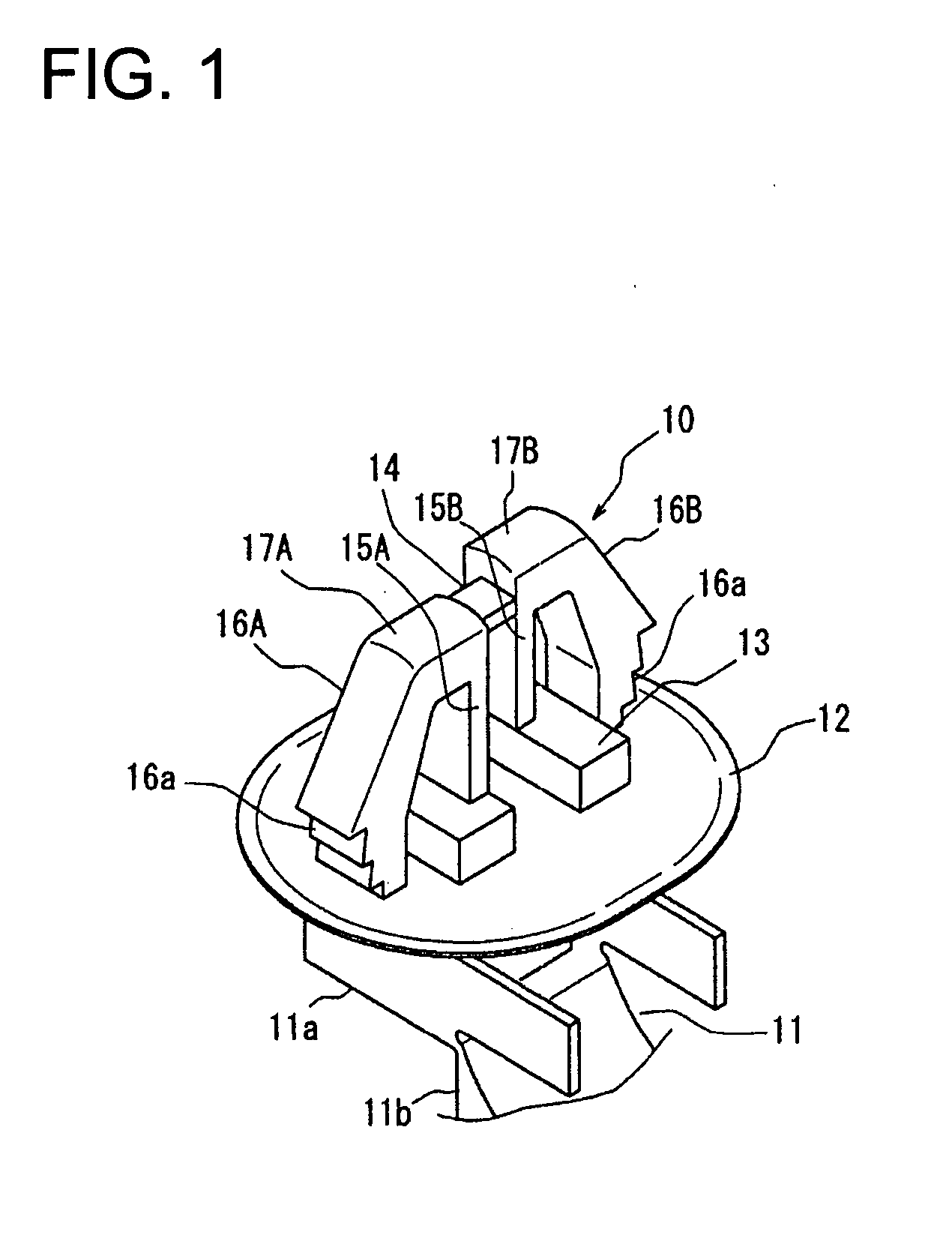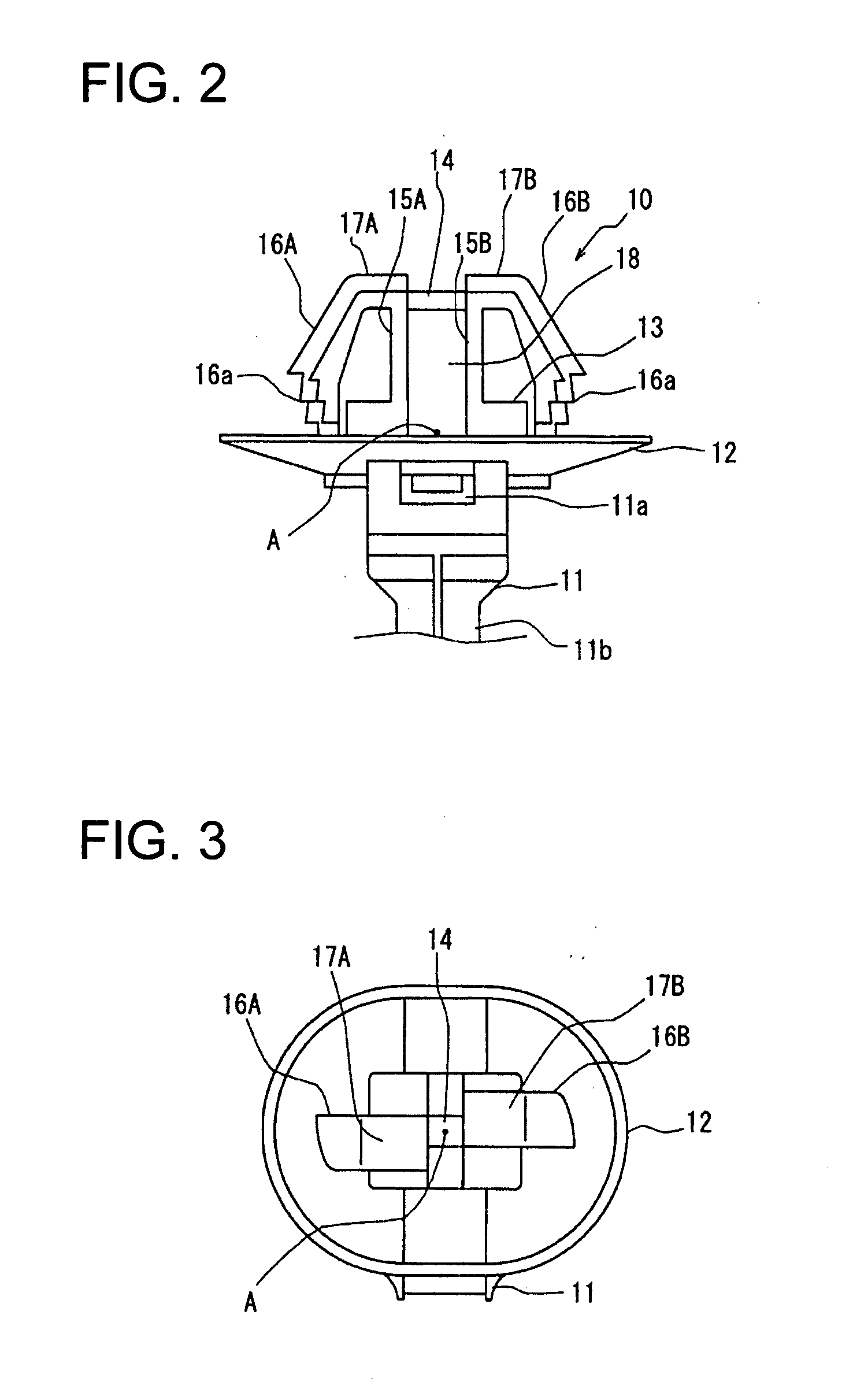Clamp for use in wire harness
a technology for wire harnesses and clamps, which is applied in the direction of mechanical equipment, other domestic objects, machine supports, etc., can solve the problems of large force required to unlock the clamp from the locking hole, and the difficulty of disassembly of the vehicle body, etc., and achieves reliable fixing, resists flexing of the stems, and removes easily from the vehicle body
- Summary
- Abstract
- Description
- Claims
- Application Information
AI Technical Summary
Benefits of technology
Problems solved by technology
Method used
Image
Examples
second embodiment
[0076] The second embodiment enables the wire harness W / H to be removed from the mounted condition on the vehicle body 30 shown in FIG. 10A by pulling the wire harness W / H strongly in the removal direction. As shown in FIG. 10B, the pulling force applied to the wire harness W / H, with concentrates stress on the V-shaped groove 20a. Thus, the left and right stems 15A, 15B and the left and right vanes 16A, 16B flex towards the cavity and about the groove 20a serving as a torsional rotation support P.
[0077] The left and right stems 15A, 15B are symmetrical with respect to the central point A of the clamp 10B. Thus, when the wire harness W / H is pulled farther, a torsional rotation about the torsional rotation point P is induced with the left stem 15A and the left vane 16A integral with each other, and with the right stem 15B and the right vane 16B integral with each other.
[0078] The vehicle body-locking part 16a of the vane 16 is unlocked from the left and right peripheral edges of the ...
third embodiment
[0084]FIGS. 12 and 13 show a clamp 10C according to a The spanning part 20-3 does not have a groove at the center to support twist, but rather has grooves 20a3, 20b3 as the supports for twist at positions corresponding to the tips of the left and right stems 15A, 15B.
[0085] The third embodiment is different from the second embodiment in the above-described construction, but other constructions of the third embodiment are similar to those of the second embodiment.
[0086] In the above-described construction, in removing the wire harness W / H from to which the wire harness W / H is fixed the vehicle body 30 by the clamp 10C, as shown in FIG. 13A. The wire harness W / H can be removed from the vehicle body 30 by pulling the wire harness away from the vehicle body, as in the other embodiments. Thus, as shown in FIG. 13B stress concentrates on the V-shaped grooves 20a3, 20b3, and the left and right vanes 16A, 16B incline and flex with the grooves 20a3, 20b3 serving as supports for twist and s...
first embodiment
[0095] The stems 15A and 15B and the vanes 16A, 16B are inserted into the locking hole 30a of the vehicle body 30, as in the More particularly, the left and right vanes 16A, 16B are pressed into the locking hole 30a by flexing the vanes 16A, 16B towards the stems 15A and 15B. The left and right vanes 16a, 16B elastically return to their original state when the vanes 16A, 16B are pressed completely into the locking hole 30a. As a result, the vehicle body-locking stepped parts 16a at the tip of the each of the left and right vanes 16A, 16B lock to the periphery of the locking hole 30a at the back side of the vehicle body 30. Thus, as shown in FIGS. 19A and 20A, the wire harness W / H is fixed to the vehicle body 30 through the clamp 10D.
[0096]FIGS. 19 through 21 show steps of removing the wire harness W / H from the vehicle body. Initially the wire harness W / H is pulled at a strong force in a direction in which the wire harness W / H is removed from the vehicle body 30, as in the first emb...
PUM
 Login to View More
Login to View More Abstract
Description
Claims
Application Information
 Login to View More
Login to View More - R&D
- Intellectual Property
- Life Sciences
- Materials
- Tech Scout
- Unparalleled Data Quality
- Higher Quality Content
- 60% Fewer Hallucinations
Browse by: Latest US Patents, China's latest patents, Technical Efficacy Thesaurus, Application Domain, Technology Topic, Popular Technical Reports.
© 2025 PatSnap. All rights reserved.Legal|Privacy policy|Modern Slavery Act Transparency Statement|Sitemap|About US| Contact US: help@patsnap.com



